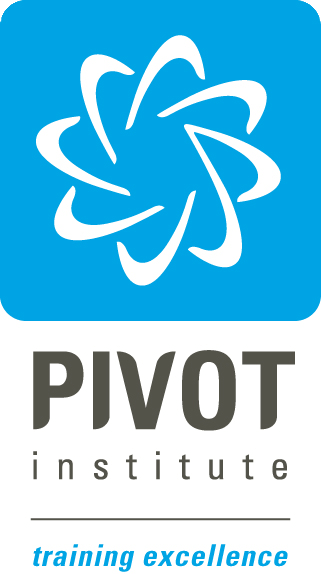This course is focused on the fundamental tools and techniques of Linux and Unix operating system so that students can gain proficiency using the command line.

L-120 Linux Fundamentals Course Overview
This course is focused on the fundamental tools and techniques of Linux and Unix operating system so that students can gain proficiency using the command line.
This course will provide extensive hands-on experience. Participants will learn how to manage files and directories, utilize the vi editor, work with Linux security mechanisms to protect files and programs.
Work with the Linux shell to control the flow and processing of data through pipelines, design and write shell programs of moderate complexity, and manage multiple concurrent processes in order to achieve higher utilization of Linux.
Audience:
This course is designed for the following professionals: -
Beginners who want a solid foundation in Linux/Unix
Experienced Linux Professionals who want to enhanced their knowledge of linux/Unix Operating System
Course Prerequisites
Students should be comfortable with computers.
No familiarity with Linux or other Unix operating systems is required.
Upon Completion Of This Course, You Will Accomplish Following:
What is Linux?
Multi-User Concepts
Login and Discovery
The Linux Filesystem
Files and Directories
Manipulating Files
File Management
Text Processing
Shell Basics
Regular Expressions
Archiving and Compression
Text Editing
Command Shells
Unix Shells
Shell Scripting
Process Management and Job Control
Job Control
Messaging
The Secure Shell (SSH)
Managing Software
You Will Learn:
Module 1: What is Linux?
UNIX Origins, Design Principles and Timeline
FSF, GNU, and GPL - General Public License
The Linux Kernel and Linux Features
What is a Distribution?
SLS, Slackware, Mandriva, and Debian
SUSE Linux Products
Role Specific Distros
Standardization
Module 2: Multi-User Concepts
Multi-User Concepts
got root?
Switching User Contexts
Gathering Login Session Info
Getting Help
Module 3: The Linux Filesystem
LINUX Filesystem Features
Filesystem Hierarchy Standard
Navigating the Filesystem
Displaying Directory Contents
Determining Disk Usage
Disk Usage with Quotas
File Ownership
File and Directory Permissions
File Creation Permissions
Changing File Permissions
SUID and SGID on files
SGID and Sticky Bit - Directories
User Private Group Scheme
Module 4: Manipulating Files
Directory Manipulation
File Manipulation
File Creation and Removal
Physical Unix File Structure
Filesystem Links
File extensions and content
Displaying Files
Previewing Files
Searching the filesystem
Alternate Search Method
Producing File Statistics
Module 5: Manipulating Files
Searching Inside Files
The Streaming Editor
Text Processing with Awk
Replacing Text characters
Text Sorting
Duplicate Removal Utility
Extracting Columns of Text
Merging Multiple Files
Module 6: Shell Basics
Role of Command Shell
Communication Channels
File Redirection
Piping Commands Together
Filename Matching
Wildcard Patterns/Globbing
Brace Expansion
Shell/Environment Variables
Environment Variables
General Quoting Rules
Nesting Commands
Module 7: Regular Expressions
Regular Expression Overview
Regular Expressions
Module 8: Archiving and Compression
Directory Archive with tar and cpio
The compress utility
The gzip and bzip2 compression utilities
Module 9: Text Editing
Text editing
Pico/GNU Nano
Pico/Nano Interface and Commands
Vi: Basic and Advanced Vi
Advanced Vi Commands
Emacs and Emacs Interface
Basic and Advanced Emacs Commands
Module 10: Command Shells
Shells
Identifying and Changing the Shell
sh: Configuration Files
sh: Script Execution
sh: Prompts
bash: Bourne Again Shell
bash: Configuration Files
bash: Command Line History, Editing and Completion
Bash: "shortcuts"
bash: prompt
Module 11: - Shell Scripting
Shell Scripting
Example Shell Script
Positional Parameters
Input & Output
Doing Math
Comparisons with test
Conditional Statements
The for Loop
The while Loop
Module 12: Process Management and Job Control
What is a Process?
Process Creation and States
Viewing Processes
Signals
Tools to Send Signals
Job Control Basics
Jobs
Screen
Using screen
Advanced Screen
Module 13: Messaging
Command Line Messaging
write, talk, and ytalk
The mesg utility
Internet Relay Chat
Instant Messenger Clients
Electronic Mail
Sending Mail with sendmail
Sending Email with mail
Overview of PINE
Sending Email with Pine
Evolution
Module 14: The Secure Shell (SSH)
Secure Shell
Accessing Remote Shells
Transferring Files
Alternative sftp Clients
SSH Key Management
ssh-agent
Module 15: Managing Software
Downloading Software
FTP, NcFTP, and lftp
wget, lynx, and links
Installing Software
Installing Binary Packages - rpm
Querying and Verifying with rpm
Installing Debian Packages
Compiling / Installing from Source
Installing Source RPM Packages
Established in 1993, Koenig is one of the leading IT training organizations in the world. Known for its unusual offerings, Koenig is spurring competition, meeting unmet needs of customers, creating jobs, and supplementing talent pools globally.
Koenig is present in USA, Canada, UK, South Africa, Dubai, India, Singapore, and Australia. Our vision is to create a more just and prosperous world through education. Helping people Step Forward.
Koenig and Kites (Koenig-ites) are driven to earn Money, Respect and Peace of Mind for Kustomers (Koenig Customers) and themselves. Money, Respect and Peace of Mind has been a driving force behind Koenig's success since inception re-iterated in Koenig Ethos and for the Microsoft Citizenship of the year award.

Excel is a spreadsheet application used to organise and analyse data. This course will teach you how to use the Excel working environment to create, open, save, format and print spreadsheets.

With our Excel Diploma course, you will learn how to produce robust and transparent analysis that drives corporate reporting and decision processes by unlocking the complete functionality of Excel.

In this course, students learn high level terminology, structure, security, deployment and migration practices as well as the general scope of Microsoft Cloud product offerings

This course is for those aiming to use PowerPoint to produce presentation materials for seminars, training sessions, presentations or workshops. This hands-on course aims to give the learner a sound grounding in the use of Microsoft PowerPoint.

The mobile phone industry has experienced an extraordinary surge in its customer base. In today’s world, people have become heavily reliant on their phones, considering them one of the most indispensable aspects of their lives.
© 2024 coursetakers.com All Rights Reserved. Terms and Conditions of use | Privacy Policy